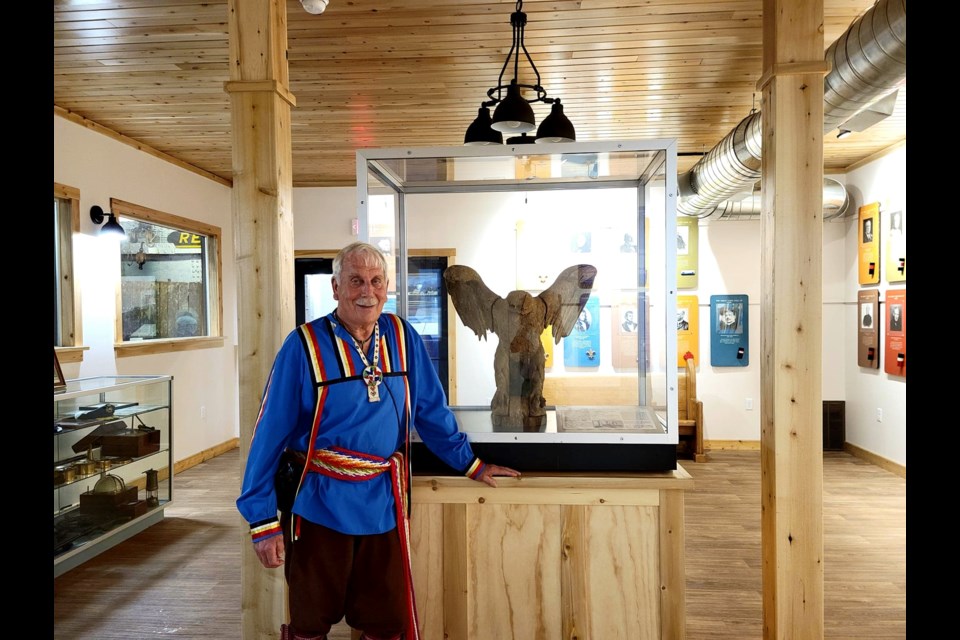When in the Sault, one may view the city from up to 210 feet high at Sault Historic Sites Tower of History, built as a shrine to early missionaries like the venerable Bishop Frederick Baraga.
From the Soo Locks to the 1,000 foot freighters passing through, its numerous museums to the many historical sites scattered about, tribal lands to its casinos, and hiking trails to water recreation more than 500,000 people visit Sault Ste. Marie, Mich. every year.
Everything may seem so small from above, but within the “Place of the Rapids” lives rich cultural history, and the industrial innovations uniting all inhabitants past to present.
“There are three balconies on the tower,” Sault Historic Sites Museum Curator Paul Sabourin said. “They represent the three crosses on Calvary; or the Father, Son and Holy Spirit. There is all the religious background information as to why there would be three, but also the Aboriginal, French and British culture of the area."
Sabourin guides visitors in their journeys to understanding the diversity that has birthed and raised this unique city by marriage.
“My involvement is with Sault Historic Sites, the organizational nonprofit that has been in existence since 1968,” said Sabourin. “It was in place when the tricentennial of the City of Sault Ste. Marie, Michigan was celebrating 300 years. It was 1668 when Father Jacques Marquette established the first permanent mission, here, in Sault Ste. Marie. So, we are around 350-years-old.”
The historic site was used to purchase and acquire the Valley Camp, which was decommissioned in 1966.
“We talk about the Valley Camp first because in the 1960s the tower of history was built by the St. Mary’s Pro-Cathedral, and in the 1980s it needed to be repaired,” Sabourin said. “They decided to build a brand new church, and they started with a $600,000 commitment. With that, they started building a bell tower. The end result was over $1 million.”
That debt was paid by the parish and its priest. From then on, it has been owned and operated by the Sault Historic Sites.
In tribute to the land’s indigenous keepers, the tower’s lower level features various Ojibwe Indian exhibits, as well as educational information on the Church’s missionaries and city.
Guarding the tower and preserving its history is Manager Tom Mansfield. He enjoys the interaction with tourists and community involvement.
“We have buses that come in every other day with people from Alabama, Mississippi,” said Mansfield. “We just did a Nebraska tour. I have one on the way (from Ohio).”
His favorite groups include K-8 students.
“This class of kids came here, and they had to find certain items,” said Mansfield. “I was their best friend that day. I knew where most of the items were. They still had to go there, and take pictures to turn in. The whole thing was great. I mean, those are good days. Sometimes, you get regular classes of kids running up the stairs. You know they will be sleeping good at night.”
Many adults are just eager to absorb the history that has enriched Michigan's oldest city. Meanwhile, the tower continues giving back to its community.
“We have an Autism awareness night,” Mansfield said. “We will light the tower up, usually around the beginning of April. Then, there is Alzheimer's awareness. We light this up all purple. People can go up there and watch the fireworks. We also did a thing called the ‘Festival of Lights.’ That's two weeks before Christmas. We opened the tower up, and let people go up from 5 to 10:00 p.m. at night to look at all the Christmas lights.”
It is everything that keeps Sabourin around after "semi-retirement."
“I will be here when I am 100,” said Sabourin, who spent over 30 years working as a consultant for the Ontario government. “My background is in recreation and culture; so heritage, library and multiculturalism.”
It just so happened that Sault Historic Site’s needed a tour guide.
“I came in on Thursday,” Sabourin said, referencing back to 2002 or maybe 03. “I answered, ‘Yes’ on Friday; I retired on Monday; and I was on board.”
Sabourin was particularly drawn in by Valley Camp exhibits, especially the Edmund Fitzgerald.
Fun Fact: He has actually met singer and songwriter of “The Wreck of the Edmund Fitzgerald” Gorgon Lightfoot about six times throughout his life.
Like Fitzgerald’s famous tribute to the ship and 29 souls aboard, Sabourin strives everyday so that "The legend lives on from the Chippewa on down
Of the big lake they called Gitche Gumee."
Tower of History and Valley Camp are open June 17 through Sept. 4, Monday to Saturday from 9 a.m. to 6 p.m, and Sunday from 10 a.m. to 5 p.m. Visit Sault Historic Sites website to find dates and times through mid-October.
Sault Historic Sites is located at 501 East Water Street Sault Ste. Marie, MI 49783. Staff may be reached at: 906-632-3658



